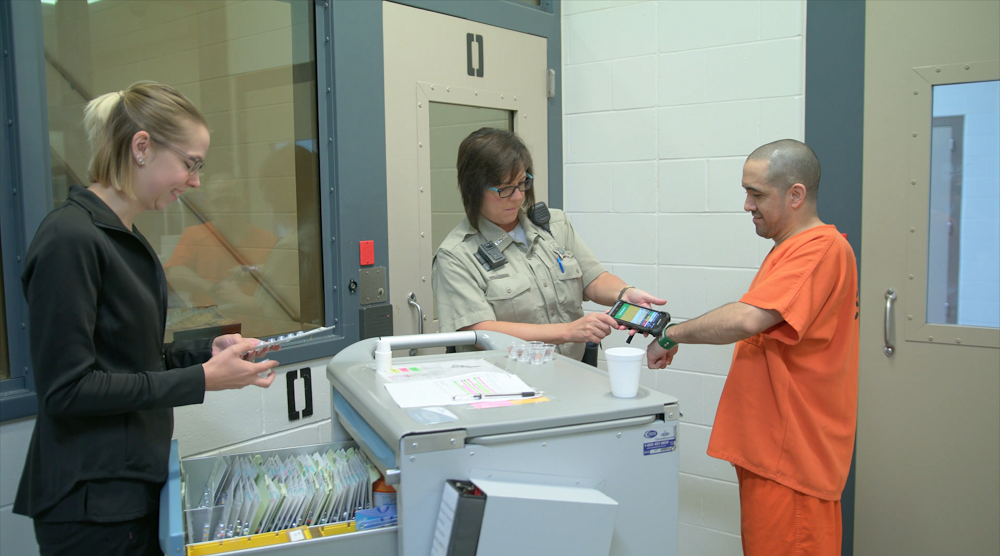The Top 5 Risks That Will Get Correctional Officers Sued
When the average person thinks about life in prison, they think of the Hollywood movies where prisoners are kept in cages and treated like animals. However, that isn’t the reality. Although inmates don’t have the same rights as the average American citizen, they are still protected by certain amendments and case law that allow them rights as incarcerated individuals.
Nonetheless, confining someone against their will is a conflict of freedom. This may make you think, at what point are we unjustly infringing on a person's freedom? This blog explores the line between respecting and infringing inmates' rights to ensure that officers don’t cross the line and put themselves (and the facility) at risk.
The C Words
The bare necessities for every human being’s survival are food, water, clothing, sleep, shelter, and safety. Although they are the bare necessities for adequate survival, they are the foundation of jail and prison risk factors (otherwise known as something that maximizes risk). These minimal needs bleed into the five common risk factors that correctional officers should already be aware of as they consist of the structure that enables inmate survivability:
Providing appropriate dietary needs (water and food)
Providing a safe and secure environment (security & sanitation)
Providing medical services
Providing mental health and social interactions (counseling & restrictive housing)
Ensuring custody status begins and ends in compliance with the law and respect
To ensure officers meet these factors, they must provide consistency, compassion, communication, and competency to succeed in the mission of care, custody, and control (yes, these are the C words… get your head out of the gutter).

The Five Emerging Risk Factors
The Jail Administrator or Warden must ensure their population has access to quality services that meet their basic needs. If basic needs are not provided in a quality manner, that’s when legal problems arise. More risk factors have emerged throughout the years and shed light on the thin grey line officers walk on to follow legal protocol.
Out of all the factors, there are five top emerging factors that correctional officers may be aware of and should pay closer attention to. If ignored, they can easily wind up being sued by an inmate. These five factors are:
Lack of consistent documentation for basic services (see list of common risks)
Documented communication between custody and medical/mental health staff
Use of Restrictive housing while still receiving basic services
Documenting de-escalation tactics before the use of force
A higher percentage of more violent inmates (bail reform)
You may notice the word “document” mentioned a few times. That’s because we live in a world today where “if there isn’t photographic evidence, it didn’t happen.” Every News channel nowadays flashes bright headlines calling for criminal justice reform, swinging the pendulum from mass incarceration to educational and restorative justice. Thus, America's detention facilities are becoming more difficult to manage and are being held more accountable by the scrutinizing public eye.
The public will demand video and written documentation detailing proof for every incident and that needs are being met. Although the public will likely trust and understand the position of our correctional professionals, they want to verify the documentation. Because of this, jail and prison facilities need to adapt to operating openly and transparently.
Operations need to evolve through digital transformation so the public can see that all aspects of incarceration are humane and responsive to the behavior and needs of the individual. Proving consistent compliance with all standards is essential. Keeping the top five emerging risk factors in mind can help achieve these modern challenges.

What Are Inmates Protected By?
As you have seen in movies, jail or prison cells are on average 6’ x 8’ sized rooms containing a bed, toilet, desk, light, and sink. As you can guess, inmates generally lose their right to privacy in jail or prison and are not protected from warrantless searches of their cell or themselves (exterior searches, not the other c). However, inmates are free from the deprivation of their property without due process by prison officials (not including any form of contraband).
Inmates are protected by the Eighth and Fourteenth Amendments (HG.org Legal Resources, n.d.) and can use these rights as leverage if they think they are ever being treated unfairly and can claim a lawsuit against an officer, administrator, or government entity. Most of these lawsuits claim negligence and suggest they were denied reasonable care or caused injury.
However, for the claim to be taken seriously the inmate must prove that the defendant owed a duty of care, it was breached, and caused direct harm that was suffered (Banks et al., 2021), including neglecting the Eight and Fourteenth Amendments:
The Eighth Amendment: Although prisoners do not have full constitutional rights, they are protected by the Eighth Amendment’s prohibition against cruel and unusual punishment. This protection also requires that prisoners be afforded a minimum standard of living (Jurkowski, 2017).
The Fourteenth Amendment: The Equal Protection Clause of the Fourteenth Amendment protects inmates against unequal treatment based on race, sex, and origin. Prisoners also have rights to speech and religion, to the extent these rights do not interfere with their status as inmates (Jurkowski, 2017).
However, if they see fit, all inmates (even those who can’t afford it) have a right to have a lawyer. Most lawsuits filed by inmates are due to an officer infringing on a person's freedom unjustly. Common types of lawsuits include:
Injuries caused by jail or prison staff
Failure to provide medical care
Wrongful death
Habeas corpus (when the inmate believes their sentence has expired or the court didn’t have the authority to sentence them in the first place) (Banks et al., 2021).
Overall, these two amendments help to avoid cruel and unusual punishment. Supreme court decisions provide subjective testing tools on whether an action will “shock the conscience” and be found as a violation of an individual's civil rights. You can operate a facility with the best intentions, policies, and procedures, but there will always be a conflict when you infringe on a person's freedom and liberty. Detention facilities must operate transparently to reduce risk and build trust with the inmate population and the public.

Administrators are required to meet ever-increasing compliance standards with federal, state, and local requirements. They need to have the pulse of the operation at their fingertips. So, think to yourself, when was the last time you had a committee audit your policies and procedures to be sure every policy has a measurement tool and auditing function to prove compliance? This may seem excessive, but as populations rise, risk increases, and lawsuits can be filed. Knowing your numbers and compliance percentages becomes a key to success. Challenge yourself and your teams to measure what matters and identify what is challenging your staff daily. Trust and verify.
References:
Banks, Lisa, Buchanan, Lance, Gold, Melissa, Hayes, Kim, Kain Kilgore, Jennifer, Pisarcik, Ian, Rapp, Nancy, (2021). Can a Prisoner Sue a Jail or Prison for Negligence?
Retrieved from https://www.enjuris.com/blog/questions/civil-suit-while-incarcerated/
HG.org Legal Resources (n.d.). Do Inmates Have Rights? If So, What Are They?
Retrieved from https://www.hg.org/legal-articles/do-inmates-have-rights-if-so-what-are-they-31517
Jurkowski, Stephanie (2017). Prisoners’ Rights
Retrieved from

